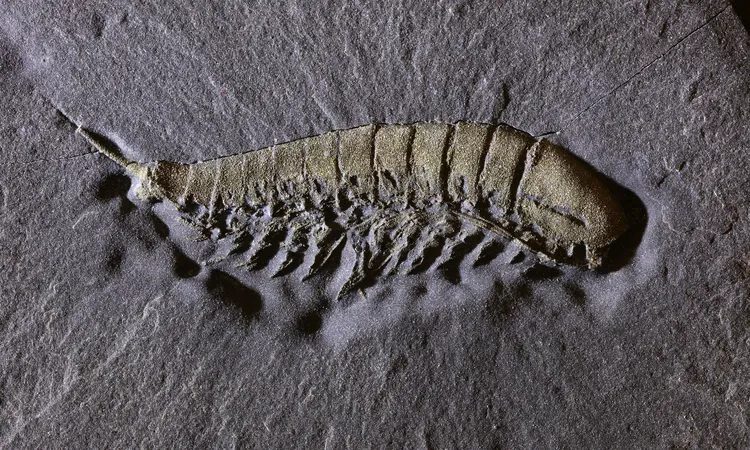
Groundbreaking Discovery: 450 Million-Year-Old 'Golden Armor' Bug Unearthed in China!
2024-10-31
Author: Siti
Introduction
In a stunning revelation for paleontologists and enthusiasts alike, a new species of arthropod, named Lomankus edgecombei, has been discovered, dating back to the Ordovician period, approximately 450 million years ago. This significant find was part of a collaborative project involving researchers from China, the UK, and the US.
Unique Characteristics of Lomankus edgecombei
What sets Lomankus edgecombei apart from typical fossils is its unique “golden armor.” This extraordinary appearance is attributed to the fossil’s formation in a low-oxygen marine environment, where its remains were quickly entombed in sediment rich in pyrite—a brassy-yellow mineral often referred to as “fool's gold.” This rare mineralization process has preserved the delicate features of the creature exceptionally well.
Challenging Old Beliefs
This ancient arthropod was previously believed to have gone extinct before the Ordovician, as the megacheiran group, to which it belongs, was thought to have only flourished during the Cambrian period. The discovery of Lomankus edgecombei not only challenges this long-held belief but also provides crucial insight into the evolutionary lineage of early arthropods—our ocean-dwelling predecessors.
Technological Advances in Research
The research team, led by Dr. Liu Yu from Yunnan University, utilized cutting-edge technologies like micro-CT scanning to create high-resolution 3D models of the fossil, effectively enabling virtual dissections of its soft tissue, including appendages. This advancement marks a significant leap in paleontological methodologies, allowing scientists to extract pivotal information from limited and fragile fossil materials.
Expert Insights
Dr. Luke Parry from the University of Oxford, also a key contributor to the study, commented, "These remarkable fossils highlight the rapid replacement of delicate anatomical features in pyrite before decay, offering key evidence about life in the oceans 450 million years ago." He emphasized that the adaptability of arthropods, due to their evolving head structures and appendages, is a contributing factor to their survival and diversity today.
Future of Paleontological Research
The implications of this discovery extend beyond mere academic interest; it underscores the collaboration and technological progress in paleontological research. The findings were unveiled in the prestigious journal Current Biology and were presented earlier at the 37th International Geological Conference in Busan, South Korea.
Collaborative Efforts Ahead
Looking forward, the research team is planning further projects focused on non-destructive 3D studies of arthropod fossils, aiming to collaborate with scientists from the UK, US, and Germany, signaling a new era of international collaboration in the field of paleontology.
Conclusion
As we delve into the depths of ancient marine life, the discovery of Lomankus edgecombei opens up exciting new possibilities for understanding the evolution of not just arthropods, but of complex life forms themselves. What other secrets are buried beneath the ocean's floor, waiting for the right technology and ambition to uncover them? Stay tuned!


 Brasil (PT)
Brasil (PT)
 Canada (EN)
Canada (EN)
 Chile (ES)
Chile (ES)
 España (ES)
España (ES)
 France (FR)
France (FR)
 Hong Kong (EN)
Hong Kong (EN)
 Italia (IT)
Italia (IT)
 日本 (JA)
日本 (JA)
 Magyarország (HU)
Magyarország (HU)
 Norge (NO)
Norge (NO)
 Polska (PL)
Polska (PL)
 Schweiz (DE)
Schweiz (DE)
 Singapore (EN)
Singapore (EN)
 Sverige (SV)
Sverige (SV)
 Suomi (FI)
Suomi (FI)
 Türkiye (TR)
Türkiye (TR)